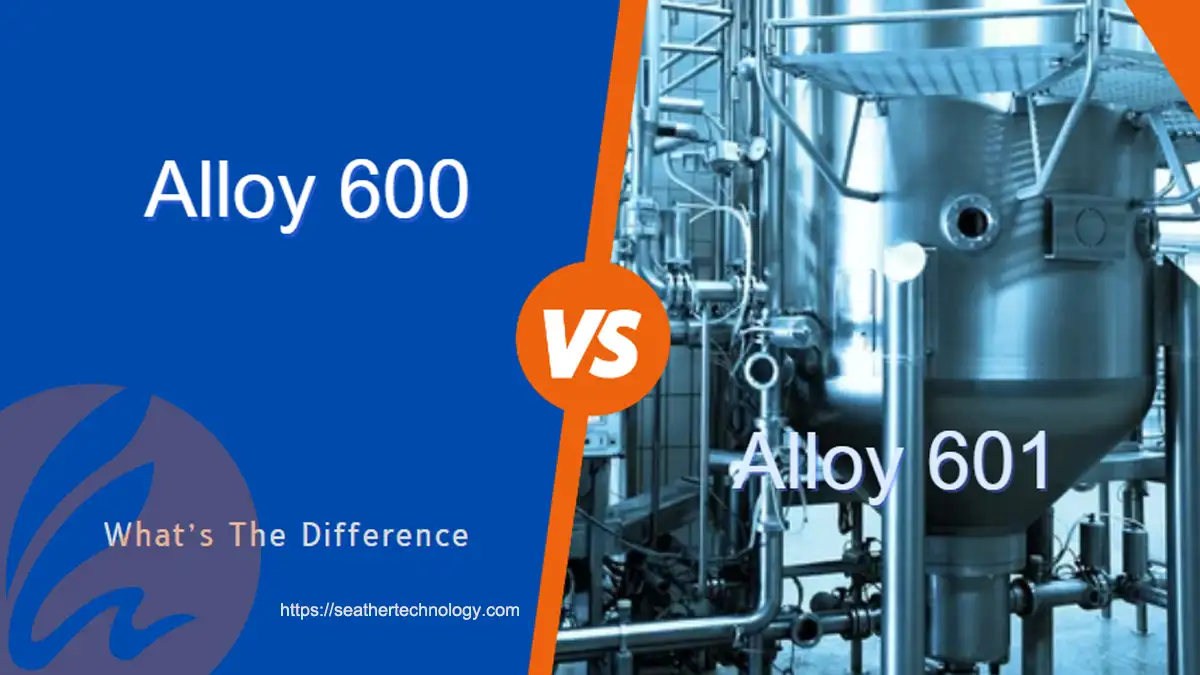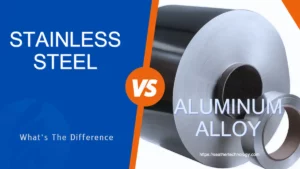Alloy 600 and alloy 601 are very similar nickel-based alloys.
Both these alloys have excellent corrosion resistance and high-temperature resistance properties.
Adding more chromium in alloy 601 increases its antioxidant properties than alloy 600.
The alloy 600 has more nickel content than alloy 601. The nickel content can increase the corrosion resistance of alloys. alloy 601 has 1-1.7% contents of aluminum. The small amount of aluminum increases the oxidation resistance of alloy 601. On the other hand, there are no aluminum contents in alloy 600.
This article is beneficial for you if you want to know the differences and similarities between alloy 600 and alloy 601.
What is Alloy 600?
A nickel-chromium alloy called alloy 600 is utilized in applications that need resistance to corrosion and high temperatures.
This nickel alloy was made to withstand service temperatures ranging from cryogenic to high temperatures around 2000° F. It exhibits the required balance of high strength and good weldability under a variety of temperatures.
Alloy 600 is non-magnetic and has outstanding mechanical qualities.
The high nickel content of alloy 600 gives it good resistance to alkaline solutions, chloride-ion stress-corrosion cracking, and corrosion by various organic and inorganic compounds. It also allows it to maintain significant resistance under reducing circumstances.
The chemical, pulp and paper, aerospace, nuclear engineering, and heat treating sectors are typical areas where the alloy 600 is used.
At high temperatures, alloy 600 possesses excellent resistance to nitrogen. This alloy can only be strengthened and hardened through cold work; however, a wide range of acceptable mechanical properties can be attained by combining cold working with heat treatments.
What is Alloy 601?
A nickel-chromium alloy with the addition of aluminum for good oxidation resistance and other high-temperature resistance is called alloy 601. High temperatures don’t affect the alloy’s mechanical performance. Due to its exceptional resistance to high-temperature oxidation, which lasts beyond 2200° F, this nickel alloy stands out.
Even under extreme temperature cycling, alloy 601 generates a strongly adhering oxide scale that resists structural failure. This nickel alloy maintains its ductility even after extended service exposure and has good high-temperature strength.
It is mechanically strong, exhibits good resistance to aqueous corrosion, and is easily produced, machined, and welded.
Due to its characteristics, alloy 601 can be used in various industries, including chemical processing, pollution control, thermal processing, power generation, and aerospace.
Difference Between alloy 600 and alloy 601
There are many similarities and minor differences between alloy 600 and alloy 601.
The comparison of these two superalloys is given below.
Chemical Composition
600 Alloy Chemical Composition
The chemical components of grade 600 is summarized in the following table:
| Grade | Standard | C | Si | Mn | P | S | Cr | Ni | Cu |
| 600 | ASTM B 168/ASME SB 168 | ≤0.15 | ≤0.50 | ≤1.00 | ≤0.015 | ≤0.015 | 14.00-17.00 | ≥72 | ≤0.5 |
601 Alloy Chemical Composition
The chemical components of grade 601 is summarized in the following table:
| Grade | Standard | C | Si | Mn | Al | S | Cr | Ni | Cu |
| 601 | ASTM B 168/ASME SB 168 | ≤0.10 | ≤0.50 | ≤1.00 | 1.00-1.70 | ≤0.015 | 21.00-25.00 | 58.0-63.0 | ≤1.0 |
Mechanical Properties
Alloy 600 Mechanical Properties
| Grade | Tensile Strength (MPa) min | Yield Strength 0.2% Proof (MPa) min | Elongation (% in 50mm) min | Hardness | |
| Rockwell B (HR B) max | Brinell (HB) max | ||||
| 600 | 500 | 180 | 30 | – | – |
Alloy 601 Mechanical Properties
| Grade | Tensile Strength (MPa) min | Yield Strength 0.2% Proof (MPa) min | Elongation (% in 50mm) min | Hardness | |
| Rockwell B (HR B) max | Brinell (HB) max | ||||
| 601 | 585 | 205 | 35 | – | – |
Applications
Alloy 600 Applications
- Retorts
- Muffles
- Roller hearths
- Furnace components
- Heat-treating applications
Alloy 601 Applications
Many industries use alloy 601, including aerospace, pollution control, chemical processing, and thermal processing.
Chemical processing is where the alloy 601 is most commonly used.
Insulating cans in ammonia reformers and combustor components in the manufacturing of nitric acid, heaters, and condenser tubes are a few applications for alloy 601.
Alloy 601 is also used in seals, combustors, diffuser assemblies, combustion-can liners, gas turbine blades, and containment rings.
Which one between Alloy 600 VS Alloy 601 is better?
Alloy 600 has a more nickel content than alloy 601.
On the other hand, alloy 601 has contains more chromium and some aluminum components. The nickel element can be particularly effective in helping metals resist corrosion. However, the resistance of this anti-corrosion effect to oxidative conditions is relatively weak.
An excellent antioxidant is chromium. When in contact with oxygen, chromium can produce an oxide deposit on its surface. This oxide coating prevents the alloy from further oxidizing. For this reason, nearly all superalloys contain chromium.
Due to 601 containing a lot of chromium, it has a significantly higher level of oxidation resistance than 600.
Therefore the 601 is better than alloy 600 in oxidation resistance. The alloy’s resistance to oxidation may also be improved by adding aluminum.
Conclusion
Now you can easily select your desired alloy between alloy 600 and alloy 601.
Both these alloys have outstanding properties and a wide range of applications.
In terms of antioxidant properties, alloy 601 is better than Inconel alloy 600, while alloy 600 is more commonly used due to its various applications.
We specialize in the production of premium-grade alloy 600 and 601 products. If you have new project today, please do not hesitate to contact our expert team.






